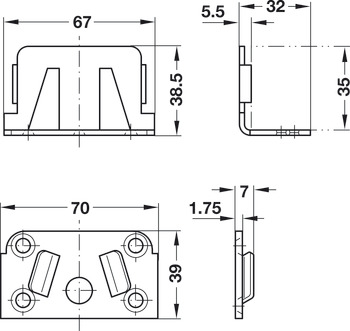sams93
Established Member
Hi,
I'm planning to build a super king (1800W x 2000L) bed at the end of October. Bed itself will be oak. I have been doing some reading about the bed slats, and as I understand sprung slats are considered to be the better option.
I was wondering whether it is simpler to just purchase them already made, but if it isn't too much work to make them then I would consider it,
I would be grateful to hear if anyone has any experience either way.
Thanks
I'm planning to build a super king (1800W x 2000L) bed at the end of October. Bed itself will be oak. I have been doing some reading about the bed slats, and as I understand sprung slats are considered to be the better option.
I was wondering whether it is simpler to just purchase them already made, but if it isn't too much work to make them then I would consider it,
I would be grateful to hear if anyone has any experience either way.
Thanks


































